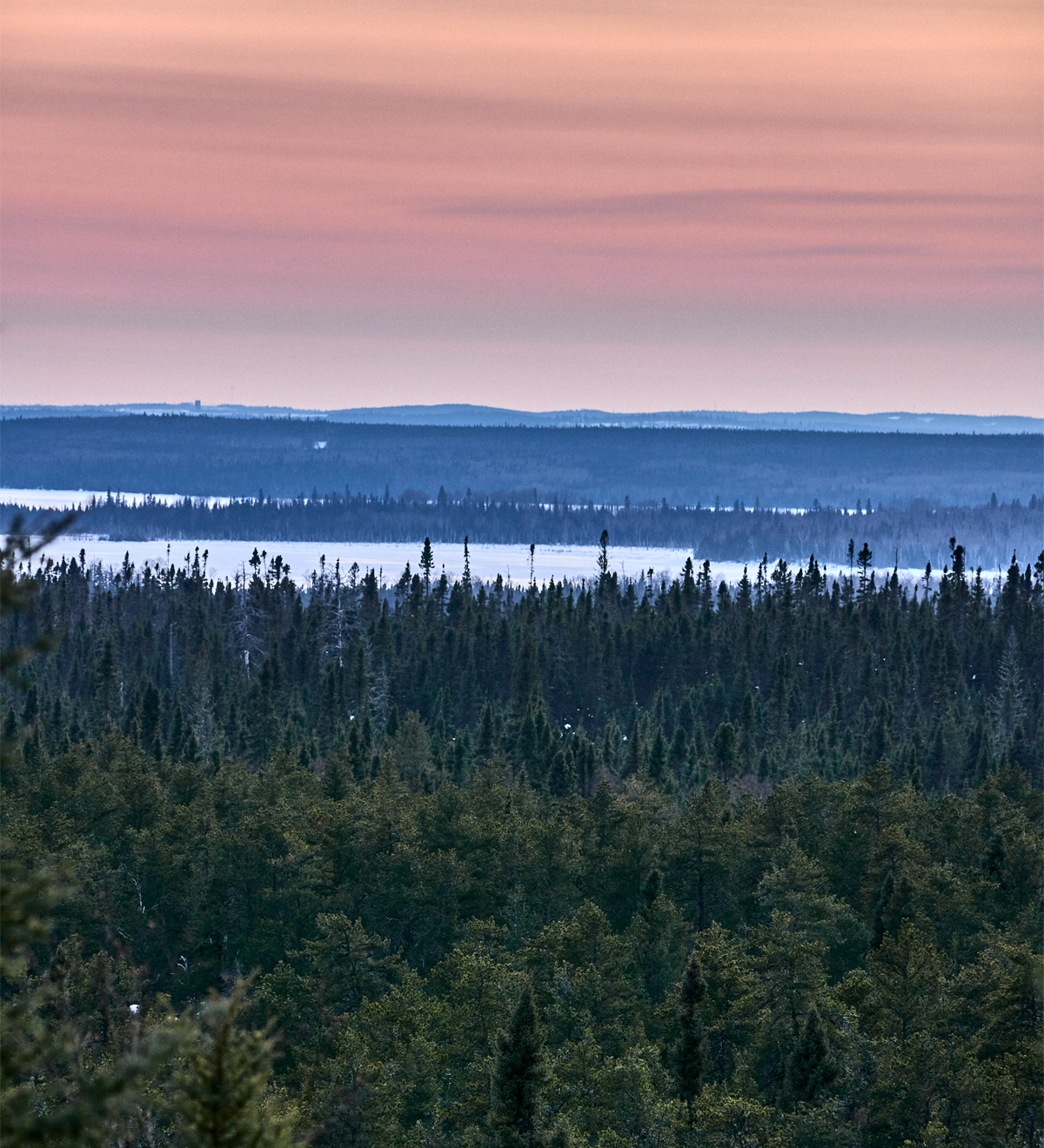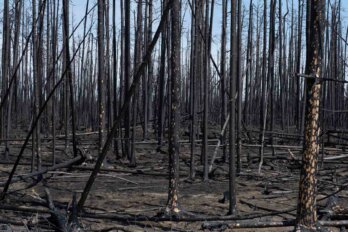In a world of USB wall outlets and universal charging cables, it can be easy to forget that, not too long ago, we could often be found roaming our houses in search of fresh AA batteries—disposable power sources for our non-rechargeable gadgets—sometimes giving up and stealing them from the TV remote. The single-use batteries many of us still use in said remotes, not to mention alarm clocks, flashlights, and smoke detectors, work thanks to chemicals stored in the negative and positive ends of the battery (an anode and a cathode, respectively), which react with each other and create a flow of electrical energy. Once those chemicals run out, you’re back on the hunt for a fresh power source.
Then, in 1991, the first commercial lithium-ion batteries hit the market: in these, external energy flows back into the battery’s chemical system and replenishes it, allowing for repeated use. This let environmentally conscious consumers make the shift from disposable to rechargeable batteries and eventually paved the way for whole new categories of devices, like the laptops and phones that we recharge by plugging into a wall. The technology has so profoundly changed our lives that John B. Goodenough, M. Stanley Whittingham, and Akira Yoshino won the 2019 Nobel Prize in Chemistry for developing it. Lithium batteries are also big business: the global industry was valued at $36.7 billion (US) in 2019 and is predicted to balloon to $129.3 billion by 2027.
Listen to an audio version of this story
For more audio from The Walrus, subscribe to AMI-audio podcasts on iTunes.
The surge in both demand and production made the 2010s the decade of the rechargeable battery, with a nearly 90 percent decline in prices over that time. It was also the period when electric vehicles (EVs) entered the mainstream—it’s projected that more than half of all new passenger cars will be electric by 2040. The environmental benefits are obvious: in Europe, an EV can produce anywhere from about 30 to 70 percent less emissions than a gasoline car and is the less polluting option almost everywhere in the world (this varies with the source of the electricity used for charging). EVs are cheaper to run and maintain than gasoline-powered vehicles, and because lower emissions equal better air quality, they are healthier.
However, lithium batteries do come at some environmental cost. Lithium is a non-renewable resource, a metal that needs to be extracted from salt flats or igneous rocks called pegmatites. That process requires a lot of energy and irreversibly damages landscapes and habitats while often depleting or contaminating local water sources. There’s also a serious waste problem. Though it’s possible to reuse their components, less than 5 percent of lithium-ion batteries get recycled: it’s cheaper to extract new lithium than to repurpose what’s already been mined. In Canada, efforts to reduce waste thus far have focused on extending battery life. This kicks the waste problem down the road to future garbage heaps; industry analysts predict approximately 11 million tonnes of these batteries will reach the end of their life cycle by 2030.
In 2018, these facts were on the minds of residents in the Abitibi-Témiscamingue region of northwestern Quebec, where Australian mining company Sayona submitted a proposal for an open-pit lithium mine. With just 147,897 inhabitants on its nearly 60,000-square-kilometre territory, the area is known for its wild spaces. Abitibiens took issue with the project—named Authier, after a local prospector—because of its planned location near a regional centre of biodiversity: the 8,000-year-old, 170-kilometre Saint-Mathieu-Berry esker. (An esker is a stratified ridge of sand and gravel that is created when an ice sheet or glacier retreats, leaving sediment behind.) An important geological formation, the esker is home to hundreds of animal species, including the wood turtle that is provincially designated as vulnerable; wolves, black bears, and moose frequent the banks, and rare Connecticut warblers fly overhead or make homes in surrounding jack pines. The esker is the water source for Amos (population 12,823), at the northeastern edge of the formation, winning the town awards for the best tap water in the world, and is the pristine supply for bottled-water company Eska.
Sayona’s plan called for extracting 1,900 tonnes of lithium a day—just 100 tonnes short of the 2,000-tonne daily extraction rate that would require the company to appear in front of Quebec’s environmental assessment agency. That assessment process would have ensured that local residents could learn about the project’s details and speak in public hearings. Guy Laliberté, CEO of Sayona Québec, told me that “investors chose this path to avoid delays, which isn’t necessarily a sign that we wanted to hide information. It was simply a business decision.”
Unable to find clear and accurate details about the mine or independent studies of its potential impact on the entire ecosystem, residents struck the Comité citoyen de protection de l’esker. One of the Comité’s early actions was to ask then environment minister MarieChantal Chassé to require a public hearing regardless of Sayona’s proposed extraction rate, which Chassé did not do. The Comité then obtained documents about the mine through an Access to Information request and determined that Sayona’s proposed extraction rate would actually amount to 2,100 tonnes a day by the time the mine was fully developed—enough to have forced an environmental assessment hearing in the first place. The minister of economy and innovation, Pierre Fitzgibbon, nonetheless claimed that his Coalition Avenir Québec (CAQ) government would try to greenlight the Authier project without a hearing, an announcement that was contested by the three opposition parties and met with a 30,000-signature petition. (Neither Chassé nor Fitzgibbon replied to requests for comment.) The Comité then took more formal action, sending a demand letter to the new minister of the environment, Benoit Charette. A hearing is now slated to take place later this year.
After the hearing was announced, Sayona upped its proposed daily extraction rate to 2,600 tonnes. Combined with ongoing uncertainty about the precise location of the mine and the sense that the company’s plans may continue to shift or develop, this generated further concern within the Comité. Sayona’s updated feasibility study for the Authier project, submitted to the provincial government at the end of 2019, suggests that the company may “increase the size of the Mineral Resource by testing extensions of known mineralization along strike at both the main Authier pegmatite and Authier North pegmatite”—technical jargon for expanding the mining activity beyond the existing proposal.
It’s not that the Comité is staunchly against this mine, but it takes issue with efforts, by both the company and the province, to quickly push toward extraction packaged as a green initiative. Quebec is already deeply invested in lithium and is taking actions to further strengthen the industry, but this commitment could come at a steep social and environmental cost—and the government isn’t, the Comité believes, taking that seriously enough. “What bothers us beyond the mining industry and Sayona . . . is the Quebec government’s objectives, going into bulldozer mode and identifying this sector as something that needs to be developed quickly,” says local environmental lawyer Rodrigue Turgeon, who is heavily involved with the Comité. “If we’re always cutting corners without assessing environmental, climate, and ecological gains, a lot of things could slip past us.”

The Abitibi-Témiscamingue region and the mining industry are historically linked. Resources are why Europeans first came to this area, in the 1890s. Mines started extracting lead, zinc, and silver, followed by copper and gold, along the Cadillac Fault, which snakes all the way into eastern Ontario. During the Great Depression, the Quebec government provided incentives for city dwellers to move to rural areas like this region in order to colonize the land. Mining companies recruited immigrants during the Second World War to move to Abitibi from Montreal or directly from their home countries to do often-dangerous manual labour; there were many major injuries and 292 deaths in the area’s mines between 1925 and 1950.
Quebec is responsible for one-fifth of Canada’s mining activity and produces the most diverse array of resources in the country, including fifteen metals and fourteen minerals, according to a 2018 provincial report. The sector directly creates roughly 48,000 jobs and $9 billion in economic activity, about 2.5 percent of the province’s GDP. With seven active mines, Abitibi has the largest number of mining projects in Quebec; the industry accounts for nearly 20 percent of jobs in the region.
Between 2014 and 2018, spending on lithium mining in Quebec increased by 789 percent; the Quebec government is bullish about lithium’s economic promise as well as its potential to uphold the province’s commitments to electrification. Premier François Legault’s CAQ party wants Quebec to be an EV leader at every link in the supply chain, from mine to finished battery, and the provincial government has formalized its commitment to EVs by vowing to ban the sale of gas-powered cars as of 2035. (This target is five years ahead of the zero-emissions-vehicle goal set by British Columbia, the only other Canadian province with this official objective.) The province already has the highest number of electric cars on the roads, and there’s no sign of that slowing down: in its 2020/21 budget, Quebec allotted $1.4 billion to Roulez Vert, a program through which people buying new EVs can save up to $8,000, the most generous such rebate plan in Canada.
Fitzgibbon places electrification and the processes that enable it at the heart of the province’s environmental future, championing plans to turn Quebec into a battery-producing market by investing up to $3.6 billion in the industry over five years, starting this year. Last August, the CAQ reinvested $300 million in Nemaska Lithium, a company plagued with financial issues that filed for creditor protection in 2019. Nemaska is trying to open a mine in Whabouchi, Quebec, in the James Bay region, where its estimated 36.7 million tonnes of reserves would make it the seventh largest lithium-extraction project in the world. And, before Sayona showed up, North American Lithium (NAL) operated a mine in La Corne, a town 64 kilometres from the proposed Authier site; NAL has since filed for bankruptcy, and Sayona is bidding to purchase the site. With a third exploration site nearby—the Tansim project, 82 kilometres southwest of Authier—the company is hoping to turn the area into a major lithium hub.
Laliberté emphasizes that Quebec’s lithium industry is greener than those of other producing countries, which he says is due to two factors: lithium here is found primarily in pegmatites, which are easier to extract from than salt flats, and the endeavour would be powered by hydroelectricity. By contrast, Australia uses coal as its primary power source, so mining there creates far greater emissions, while Chile’s vast lithium deposits are in the brine of hard-to-extract salt flats, and production there has depleted water supplies. Though Quebec’s projects may not seem so damaging in comparison, before going bankrupt, the NAL mine was responsible for over eighty environmental accidents between 2013 and 2018, leaking hundreds of thousands of litres of lithium sulfate, hydraulic oil, process water, lime, diesel, motor oil, and other toxic products into surrounding groundwater.
It is that history, in addition to questions of transparency, that concerns the Comité, which continues to advocate for a balance between economic development and environmental protection. Companies, Turgeon says, “need to realize the resource-rich regions in their minds aren’t just there for resources, they’re also inhabited.” The mining industry often cites employment and prosperity as advantages of its projects, though that is not how Turgeon sees it playing out, pointing to influxes of a relatively small number of high-paying jobs (approximately 160 for Authier) that create wealth gaps within communities.
Because the project would be located partially on Algonquin territory, the Abitibiwinni First Nation of Pikogan would also be affected by mining development. In 2019, the Abitibiwinni signed an agreement with Sayona; in a press release, chief Monik Kistabish said the agreement “provides benefits for the Abitibiwinni First Nation in terms of sustainable development and economy” and that she looked forward to collaborative discussions about the environmental ramifications of the project with Sayona. (Representatives of the Abitibiwinni First Nation declined to comment further.)
Following the Comité’s actions, Sayona moved the planned location of its mining pit to be farther from the esker, though its precise whereabouts are still not publicly known. The company hired independent experts to conduct studies about the mine’s potential environmental ramifications and issued an environmental impact report. And, though few details are available, Laliberté maintains that Sayona will work with Ducks Unlimited Canada and the Abitibiwinni First Nation on wetland wildlife relocation.
Though they perhaps recognize the mine’s inevitability, members of the Comité have a hard time accepting that projects threatening ecosystems are fundamentally on the side of ecology. “There’s a rich forest ecosystem here, there are wetlands…and groundwater for the entire region,” says Turgeon. “The company has two messages: one for investors, which is to present the project as being as big as possible, and a second message for the local population, which is to present the project as being as small as possible.”





